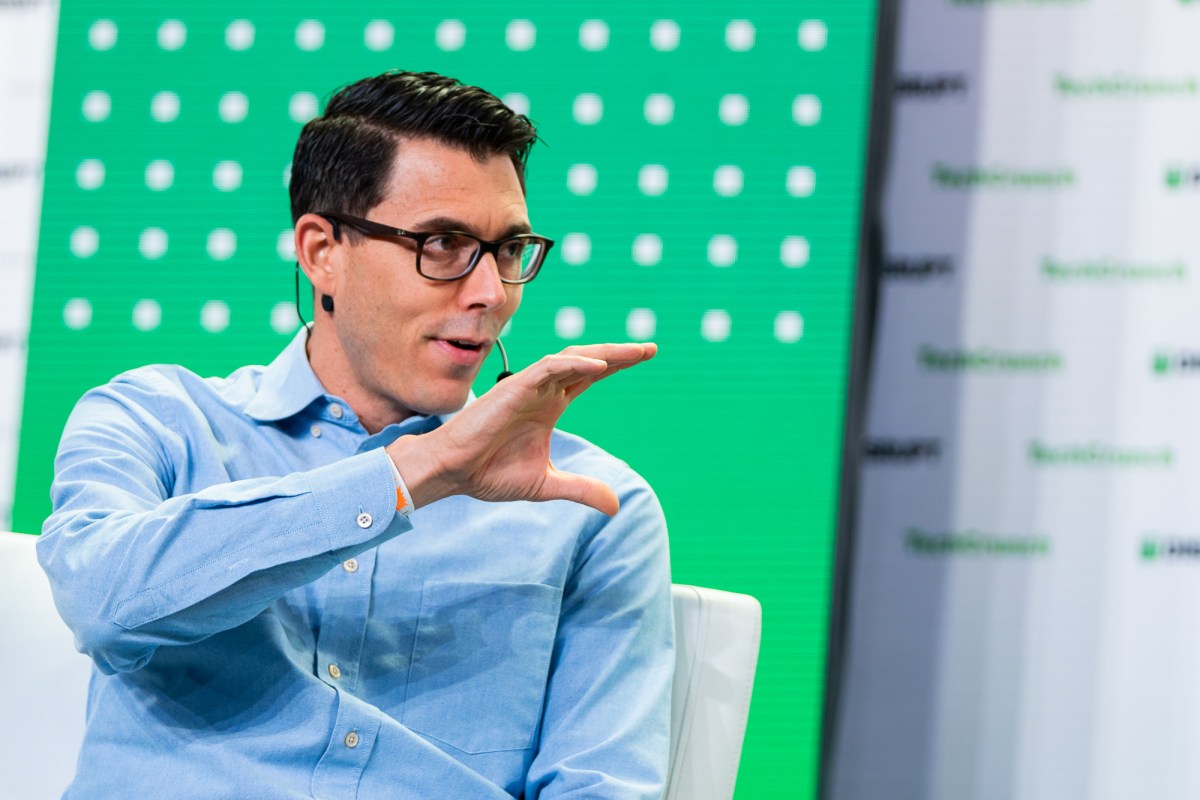‘The Daily Show’ with Jon Stewart is not the same show as before. That’s a good thing
In a classic joke from 30 Rock, Alec Baldwin’s NBC executive informs his mentee, played by Tina Fey, of the network’s plans for recapturing fallen ratings, which include: “Make it 1997 again through science or magic.” Comedy Central executives seemed to be banking on the same strategy, give or take a decade, when they recently lured Jon Stewart back to The Daily Show, after a fruitless year-plus effort to fill the vacant seat left by Trevor Noah’s departure. Perhaps the host’s return (on Monday nights through the election) will herald not only a return to pre-2016 ratings possibilities for a late-night cable comedy show, but pre-2016 liberal confidence that as long as Stewart is smirking and ranting at the political ills of the day, everything’s going to be okay. Now that the first episode has aired, though, one thing is abundantly clear: Stewart would like his viewers to forget whatever he and the show used to mean to them, and become more productively engaged with reality on the ground. “Why am I back?” he asks in the opening moments. “I have committed a lot of crimes.” He goes on to flesh out the premise that, by returning to the show, he is granted immunity, instructing anyone who has a problem with it to “take it up with the founders.” And with that, the experiment of a Stewart-led Daily Show in a post-President Trump world has begun. It was kind of a punk rock move for the host to bow out of the satirical news business in 2015, just as Trump dragged reality itself into the satirical news business. While many other comedians on the political beat seemed jazzed about the “comedy gold” to be mined from a Trump presidential election, Stewart hung up his pickax. His absent commentary on the nightly news cycle in the years that followed both benefitted and irreparably harmed his reputation. Former viewers got to see how ineffective the brand of hypocrisy-gotcha Stewart perfected would fare against a new breed of politician, immune to shame, without ever having to see him personally fail with it, night after night. Instead, they watched helplessly as former colleague John Oliver instructed them to call Trump “Drumpf,” and a nightly parade of Jimmies delivered interchangeable one-liners about whatever the Bad Orange Man just said. Politics has obviously changed since 2015, and so has comedy, and so too has the idea that comedy is any kind of actionable opposition to politics, rather than a brief refuge from it. The reality where Sarah Palin could be laughed off the world stage is gone, along with the one where Tucker Carlson can be embarrassed into obsolescence by Jon Stewart telling it like it is. More importantly, what’s also gone is the public’s agreement on a shared reality, as people gravitated toward customized news sources. In 2015, it was kind of embarrassing for the country that an estimated 12% of Americans cited The Daily Show as a source for their news; now, 14% of U.S. adults say they regularly get their news from TikTok, and nothing could be less surprising. While all these changes were happening, Stewart laid relatively low. He made rare visits to former colleague Stephen Colbert’s desk on Late Night, but mainly concerned himself with more serious endeavors. By advocating for adequate healthcare for 9/11 responders in a courtroom, rather than a television studio, he found he actually could make a tangible difference. That experience apparently informed his approach to television when he launched The Problem with Jon Stewart on Apple TV+ in 2021. This show was closer in aim and tone to a legitimate newsmagazine like 60 Minutes than it was to The Daily Show, even if it did occasionally crack some jokes. It was then unceremoniously canceled after two seasons, when Apple executives sought to impose restrictions on what Stewart could cover in a planned third season. Fortunately, his former employer happened to have a key position open at the time. “Now, where was I?” Stewart asks at the top of his first episode back at The Daily Show, where he will presumably have fewer restrictions. (He quickly describes the Israel-Hamas War as “Israel’s incessant bombing of Gaza,” for instance.) He does not, however, pick things up right where he left off. Watching Stewart react to the idiocy of the day’s news feels different than watching any other late-night hosts do so now because we are witnessing his reentry into a changed landscape. Those hosts have been responding to our through-the-looking-glass world for years, while Stewart is more like an Unfrozen Caveman Satirical Talk Show Host. He is figuring out, in real-time, what is possible to do and say with his old medium, and that’s exciting to watch. Stewart and his writing team are aware of the lofty expectations of his return to the show, and seek to squash them right away. Jordan Klepper, who has run with the old-school Colbert playbook in some fun directions, asks the new host if he’s “saved democracy yet” with his “’90s brand

In a classic joke from 30 Rock, Alec Baldwin’s NBC executive informs his mentee, played by Tina Fey, of the network’s plans for recapturing fallen ratings, which include: “Make it 1997 again through science or magic.” Comedy Central executives seemed to be banking on the same strategy, give or take a decade, when they recently lured Jon Stewart back to The Daily Show, after a fruitless year-plus effort to fill the vacant seat left by Trevor Noah’s departure.
Perhaps the host’s return (on Monday nights through the election) will herald not only a return to pre-2016 ratings possibilities for a late-night cable comedy show, but pre-2016 liberal confidence that as long as Stewart is smirking and ranting at the political ills of the day, everything’s going to be okay. Now that the first episode has aired, though, one thing is abundantly clear: Stewart would like his viewers to forget whatever he and the show used to mean to them, and become more productively engaged with reality on the ground.
“Why am I back?” he asks in the opening moments. “I have committed a lot of crimes.” He goes on to flesh out the premise that, by returning to the show, he is granted immunity, instructing anyone who has a problem with it to “take it up with the founders.” And with that, the experiment of a Stewart-led Daily Show in a post-President Trump world has begun.
It was kind of a punk rock move for the host to bow out of the satirical news business in 2015, just as Trump dragged reality itself into the satirical news business. While many other comedians on the political beat seemed jazzed about the “comedy gold” to be mined from a Trump presidential election, Stewart hung up his pickax. His absent commentary on the nightly news cycle in the years that followed both benefitted and irreparably harmed his reputation. Former viewers got to see how ineffective the brand of hypocrisy-gotcha Stewart perfected would fare against a new breed of politician, immune to shame, without ever having to see him personally fail with it, night after night. Instead, they watched helplessly as former colleague John Oliver instructed them to call Trump “Drumpf,” and a nightly parade of Jimmies delivered interchangeable one-liners about whatever the Bad Orange Man just said.
Politics has obviously changed since 2015, and so has comedy, and so too has the idea that comedy is any kind of actionable opposition to politics, rather than a brief refuge from it. The reality where Sarah Palin could be laughed off the world stage is gone, along with the one where Tucker Carlson can be embarrassed into obsolescence by Jon Stewart telling it like it is. More importantly, what’s also gone is the public’s agreement on a shared reality, as people gravitated toward customized news sources. In 2015, it was kind of embarrassing for the country that an estimated 12% of Americans cited The Daily Show as a source for their news; now, 14% of U.S. adults say they regularly get their news from TikTok, and nothing could be less surprising.
While all these changes were happening, Stewart laid relatively low. He made rare visits to former colleague Stephen Colbert’s desk on Late Night, but mainly concerned himself with more serious endeavors. By advocating for adequate healthcare for 9/11 responders in a courtroom, rather than a television studio, he found he actually could make a tangible difference. That experience apparently informed his approach to television when he launched The Problem with Jon Stewart on Apple TV+ in 2021. This show was closer in aim and tone to a legitimate newsmagazine like 60 Minutes than it was to The Daily Show, even if it did occasionally crack some jokes. It was then unceremoniously canceled after two seasons, when Apple executives sought to impose restrictions on what Stewart could cover in a planned third season.
Fortunately, his former employer happened to have a key position open at the time.
“Now, where was I?” Stewart asks at the top of his first episode back at The Daily Show, where he will presumably have fewer restrictions. (He quickly describes the Israel-Hamas War as “Israel’s incessant bombing of Gaza,” for instance.) He does not, however, pick things up right where he left off.
Watching Stewart react to the idiocy of the day’s news feels different than watching any other late-night hosts do so now because we are witnessing his reentry into a changed landscape. Those hosts have been responding to our through-the-looking-glass world for years, while Stewart is more like an Unfrozen Caveman Satirical Talk Show Host. He is figuring out, in real-time, what is possible to do and say with his old medium, and that’s exciting to watch.
Stewart and his writing team are aware of the lofty expectations of his return to the show, and seek to squash them right away. Jordan Klepper, who has run with the old-school Colbert playbook in some fun directions, asks the new host if he’s “saved democracy yet” with his “’90s brand of snark and bothsiderism” and “brainwash[ed] voters into accepting a corrosive status quo.” This show is airing out its own sharpest critiques right up top, like Eminem’s character in the climactic freestyle battle from 8 Mile.
Sure, the sight of Stewart mugging at the camera and doing silly voices again might trigger 2015 flashbacks, and yes, he does lead with a Trump joke before getting to the Biden material, but this show feels like something more substantial than nostalgia bait for geriatric millennials. Stewart isn’t here to be liberal comfort food. Or he isn’t just here for that, anyway. In his first episode, he instead seems hellbent on disabusing liberals of any 2015 notions, like the idea that real change is as easy as a Sarah Palin gotcha or Jon Stewart returning to The Daily Show or even Donald Trump going to jail.
“I have learned one thing over the last nine years, and I was glib at best and probably dismissive at worst about this,” he says in the most poignant moment of his monologue. “The work of making this world resemble one you would prefer to live in is a lunch pail job, day in and day out, where thousands of committed, anonymous, smart, and dedicated people bang on closed doors and pick up those who have fallen and grind away on issues until they get a positive result, and even then, have to stay on to make sure that result holds.”
The Jon Stewart of 2024 understands there is no magic bullet for saving democracy, and that even if there were, there are too many targets to solve our democratic crisis quickly or for good. He isn’t trying to make it 2015 again through science or magic; he is trying to make it so his audience is never lulled into the complacency of 2015 again, now or ever.
So far, he’s off to a strong start.






















